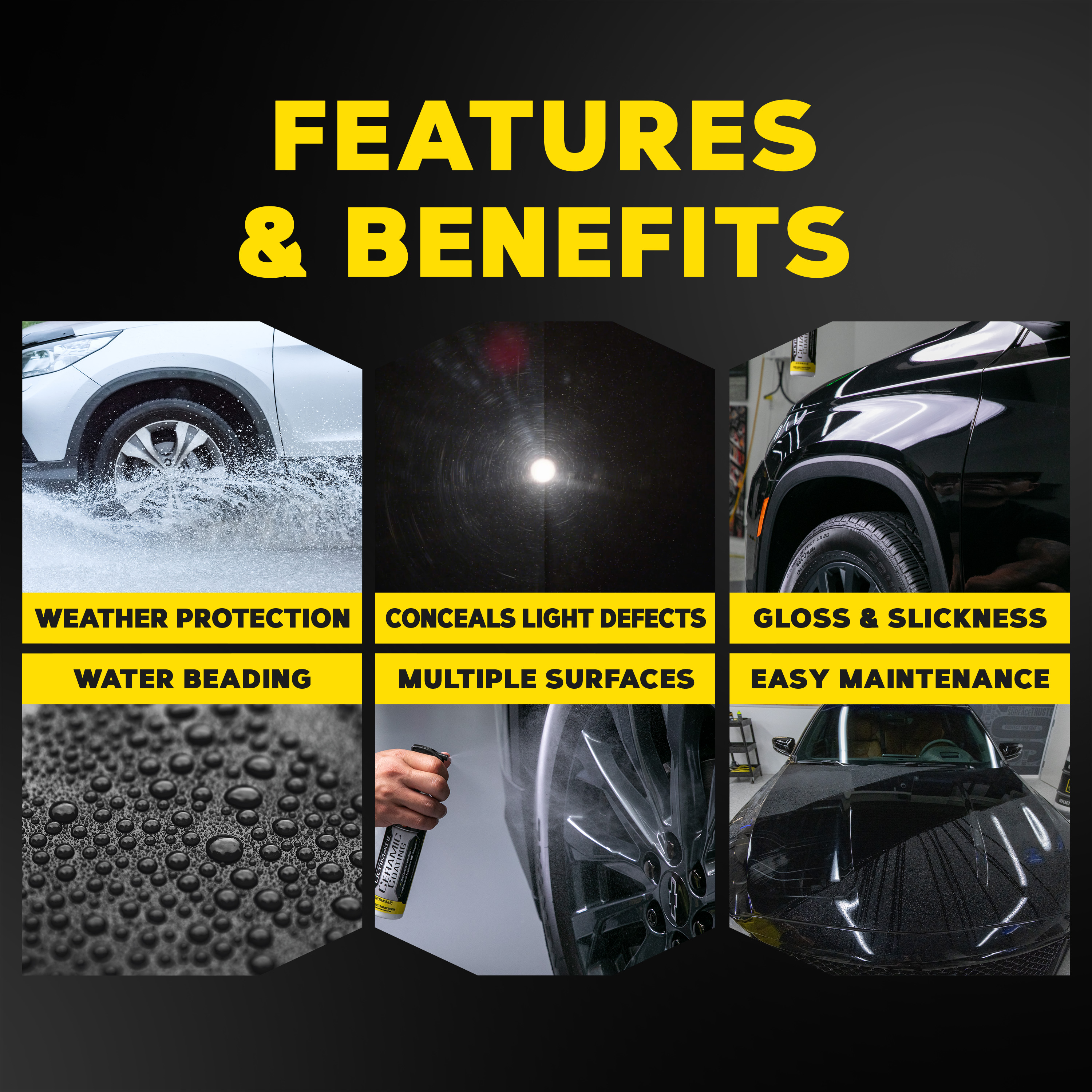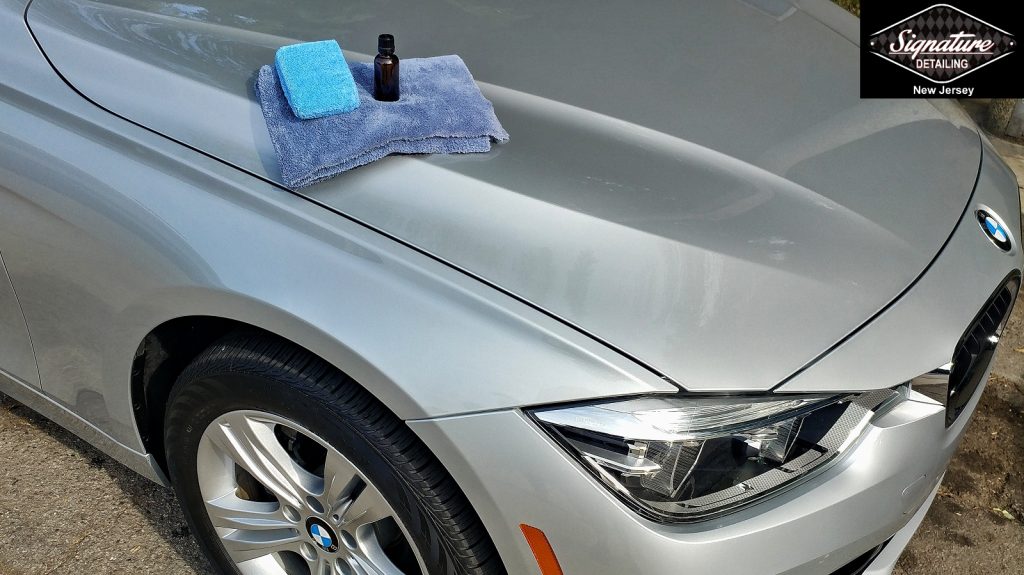The Scientific research Behind the Toughness of Ceramic Coating Philadelphia Applications
The Scientific research Behind the Toughness of Ceramic Coating Philadelphia Applications
Blog Article
Why Ceramic Layer Is the Ultimate Remedy for a Flawless End Up
Ceramic coating has actually become a leading remedy for those seeking a remarkable finish for their automobiles, many thanks to its impressive longevity and safety attributes. This advanced fluid polymer not just bonds effortlessly with manufacturing facility paint however likewise provides a powerful barrier against typical risks such as scrapes, UV rays, and toxic wastes. Its hydrophobic properties simplify maintenance while improving visual appeal. Nevertheless, recognizing how this technology contrasts to standard methods and discovering its application subtleties can reveal much more concerning its worth. What factors genuinely set ceramic covering apart?
What Is Ceramic Layer?

When applied appropriately, ceramic covering produces a hydrophobic surface area that fends off water and dirt, making it less complicated to preserve and clean up. Unlike conventional waxes or sealants, which generally use short-term defense, ceramic finishes can last for a number of years, depending on the product top quality and application approach. The procedure of using ceramic finish needs meticulous prep work, consisting of comprehensive cleaning and often repaint correction, to make sure optimum bonding and effectiveness.
Ceramic layers are not limited to auto surface areas; they can additionally be made use of on numerous products, consisting of glass, metal, and plastics, providing a functional option for improving defense. Generally, ceramic covering stands for a significant improvement in surface area protection modern technology, integrating both visual and useful advantages for a variety of applications.
Benefits of Ceramic Finishing
While lots of surface area defense alternatives exist, the advantages of ceramic finishing stand out due to its unique residential properties and durable performance. One of the key benefits is its exceptional longevity. Ceramic Coating Philadelphia. Unlike typical wax or sealers that call for frequent reapplication, ceramic coverings provide a durable layer that can last for numerous years, significantly decreasing upkeep efforts
Another notable advantage is enhanced protection versus ecological pollutants. Ceramic finishings develop a hydrophobic surface area that wards off water, dust, and various pollutants, making it simpler to clean. This attribute not only preserves the lorry's look but also minimizes the threat of deterioration and oxidation, especially in extreme climate condition.
Additionally, ceramic finishings use premium resistance to UV rays, preventing fading and degradation of paint over time. This UV security is crucial for preserving the visual value of cars and surfaces subjected to route sunshine.
Additionally, the shiny surface accomplished with ceramic coating boosts the total visual charm, giving surfaces a showroom-quality luster. Generally, ceramic finishes stand for a substantial innovation in surface protection innovation, providing long-lasting advantages that satisfy both useful and aesthetic needs.
Exactly How It Works
Comprehending the scientific research behind ceramic finishes reveals exactly how weblink they supply such remarkable defense and longevity. At its core, a ceramic coating is a fluid polymer that chemically bonds with the vehicle's manufacturing facility paint. This bonding produces a protective layer that is both oleophobic and hydrophobic, repelling water, dirt, and oil. The main element of many ceramic coatings is silicon dioxide (SiO2), which is originated from quartz. This compound adds to the finish's solidity and resistance to scrapes, UV rays, and ecological impurities.
The application process includes several steps, consisting of surface preparation, which is critical to attaining optimal attachment. Once applied, the layer undertakes a treating process, throughout which it sets and forms a semi-permanent bond with the paint surface area. This bond is what differentiates ceramic finishings from typical waxes and sealants, offering a longer-lasting protective barrier that can endure for years.
Additionally, the density of the coating can enhance its protective high qualities, ensuring that it can endure harsh conditions. Inevitably, the scientific research of ceramic coverings combines advanced products with cutting-edge application strategies to supply an unparalleled degree of security and aesthetic improvement for lorries.
Contrast With Traditional Approaches
The benefits of ceramic coatings end up being particularly apparent when contrasted to conventional paint protection approaches such as waxes and sealers. While waxes supply a momentary luster, typically lasting a few weeks to a number of months, ceramic coverings provide a lasting safety layer that can endure for a number of years. This resilience considerably reduces the frequency of reapplication, making ceramic finishes an extra economical remedy over time.
Additionally, typical methods usually call for comprehensive prep work and several applications to accomplish an adequate degree of security. On the other hand, ceramic coatings bond at a molecular level with the lorry's surface area, producing a durable shield against environmental pollutants like UV rays, acid rainfall, and roadway salts. This bond boosts the lorry's resistance to scrapes and swirl marks, which prevail with standard waxes and sealers.
Additionally, the hydrophobic buildings of ceramic finishings push back water and dust, leading to much easier cleaning and maintenance. On the other hand, wax and sealant-treated surfaces can draw in crud, demanding even more regular washing - Ceramic Coating Philadelphia. On the whole, ceramic finishes not just provide exceptional protection however likewise supply a more enduring and visually attractive finish, establishing them as the favored choice for critical automobile proprietors
Application and Maintenance Tips

Utilizing a foam applicator, apply the finish in small sections, adhering to the supplier's standards concerning density and overlap. Permit sufficient treating time in between layers, commonly 24 hours, to make sure appropriate bonding. After application, it is vital to prevent direct exposure to water or harsh aspects for a minimum of a week to allow the layer to totally heal.
In addition, making use of a ceramic upkeep spray can improve the coating's hydrophobic buildings visit the site and longevity. Routine inspections for any indications of wear will certainly aid maintain the layer's honesty and preserve that excellent surface.
Final Thought
In verdict, ceramic finish emerges as a remarkable option for attaining a remarkable automotive surface. By developing a robust bond with factory paint, ceramic covering properly shields against scratches, UV rays, and environmental impurities.

Report this page